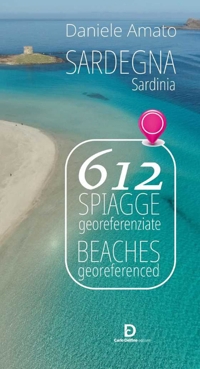Felice Palma. Massa 1583-1625. Collezione / Collection.
Testi di Andrei Cristina, Ciarlo Nicola, Federici Fabrizio, Claudio Casini e Sara Ragni.
Testo Italiano e Inglese.
Pontedera, 2024; ril. in cofanetto, pp. 289, ill. b/n e col., tavv. b/n e col., cm 24,5x34.
(L'Oro Bianco. Straordinari Dimenticati. The White Gold Forgotten Masters).
prezzo di copertina: € 160.00
|
Libri compresi nell'offerta:
Felice Palma. Massa 1583-1625. Collezione / Collection.
Testi di Andrei Cristina, Ciarlo Nicola, Federici Fabrizio, Claudio Casini e Sara Ragni.
Testo Italiano e Inglese.
Pontedera, 2024; ril. in cofanetto, pp. 289, ill. b/n e col., tavv. b/n e col., cm 24,5x34.
(L'Oro Bianco. Straordinari Dimenticati. The White Gold Forgotten Masters).
OMAGGIO (prezzo di copertina: € 160.00)
Le botteghe del marmo
Testo Italiano e Inglese.
Ospedaletto, 1992; ril., pp. 153, 10 ill. b/n, 60 ill. col., cm 24x29.
(Immagine).
OMAGGIO (prezzo di copertina: € 34.49)
Museo Stefano Bardini. I Bronzetti e gli Oggetti d'Uso in Bronzo
A cura di Nesi A.
Firenze, 2009; br., pp. 191, 102 ill. b/n, 7 ill. col., cm 17x24,5.
(Museo Stefano Bardini).
OMAGGIO (prezzo di copertina: € 30.00)
Bronzetti e Rilievi dal XV al XVIII Secolo
Bologna, 2015; 2 voll., ril. in cofanetto, pp. 729, ill., tavv. col., cm 21,5x30,5.
OMAGGIO (prezzo di copertina: € 90.00)
Copies and adaptations from Renaissance and Later Artists. Italian Masters. Raphael and his School
Harvey Miller Publishers
Testo Inglese.
London, 2010; 2 voll., ril. in tela, pp. 718, 263 ill. b/n, 20 ill. col., cm 18x26,5.
(Corpus Rubenianum Ludwig Burchard, 26.2/1).
collana: Corpus Rubenianum Ludwig Burchard. 0026.0002.
ISBN: 1-905375-39-5 - EAN13: 9781905375394
Soggetto: Arti Grafiche (Disegno, Incisione, Miniatura),Pittura
Periodo: 1400-1800 (XV-XVIII) Rinascimento,1800-1960 (XIX-XX) Moderno
Luoghi: Europa,Italia
Testo in: 
Peso: 2.61 kg
Rubens made relatively few drawings from paintings while in Italy between 1600 and 1608, although some sur vive after frescoes by Pordenone that he saw in Treviso and there are also a number that record Michelangelos paintings in the Sistine Chapel in Rome. Most of the catalogue entries, how-ever, discuss the Italian copy drawings that Rubens bought during his travels and brought home to Antwerp. It will be argued that these sheets were taken out and retouched by him throughout his career. In total, this material amounts to one of the largest collections of graphic art assembled by a late Renaissance painter, and as a result it reveals Rubenss sophis-ticated and complex dialogue with Italian art.
Daniele Amato € 19.00
€ 20.00 -5 %
Wirth Oswald € 14.25
€ 15.00 -5 %
Etica Coniugale. Per un Rinnovamento della Morale Matrimoniale
In gioco. Illusione e divertimento nell'arte italiana 1850-1950
Proarch Studium 2030. La città degli studenti/Call for projects
Officina 1922. Una Mostra alle Origini della Fortuna del Barocco
















